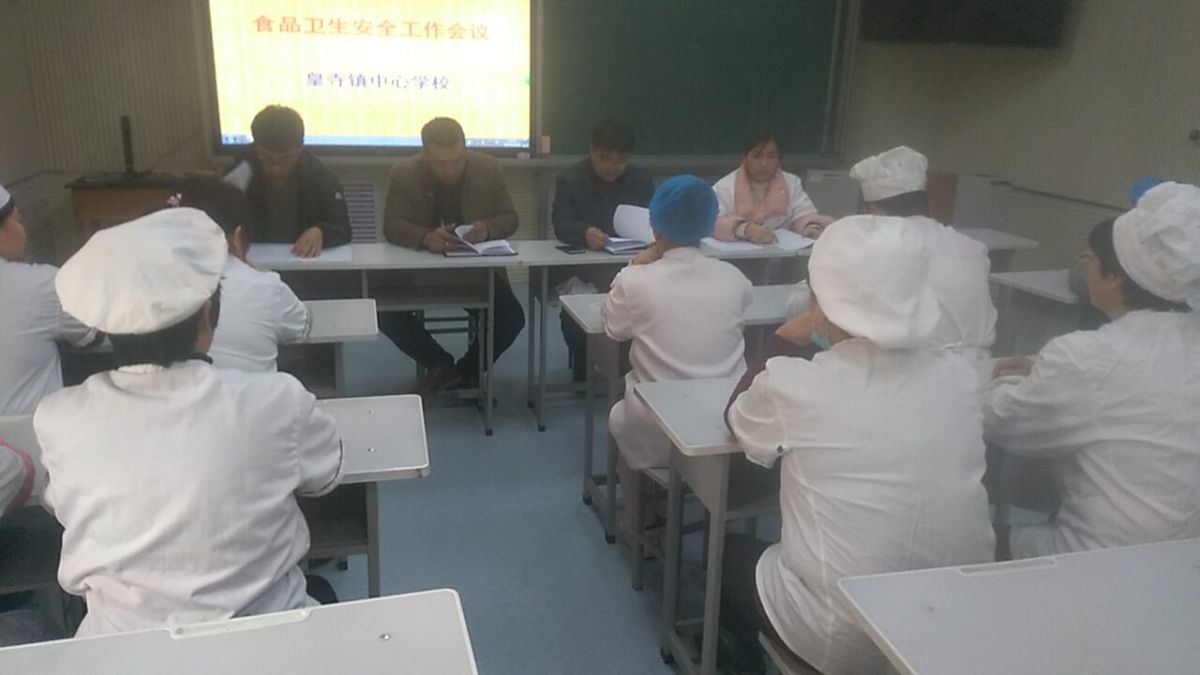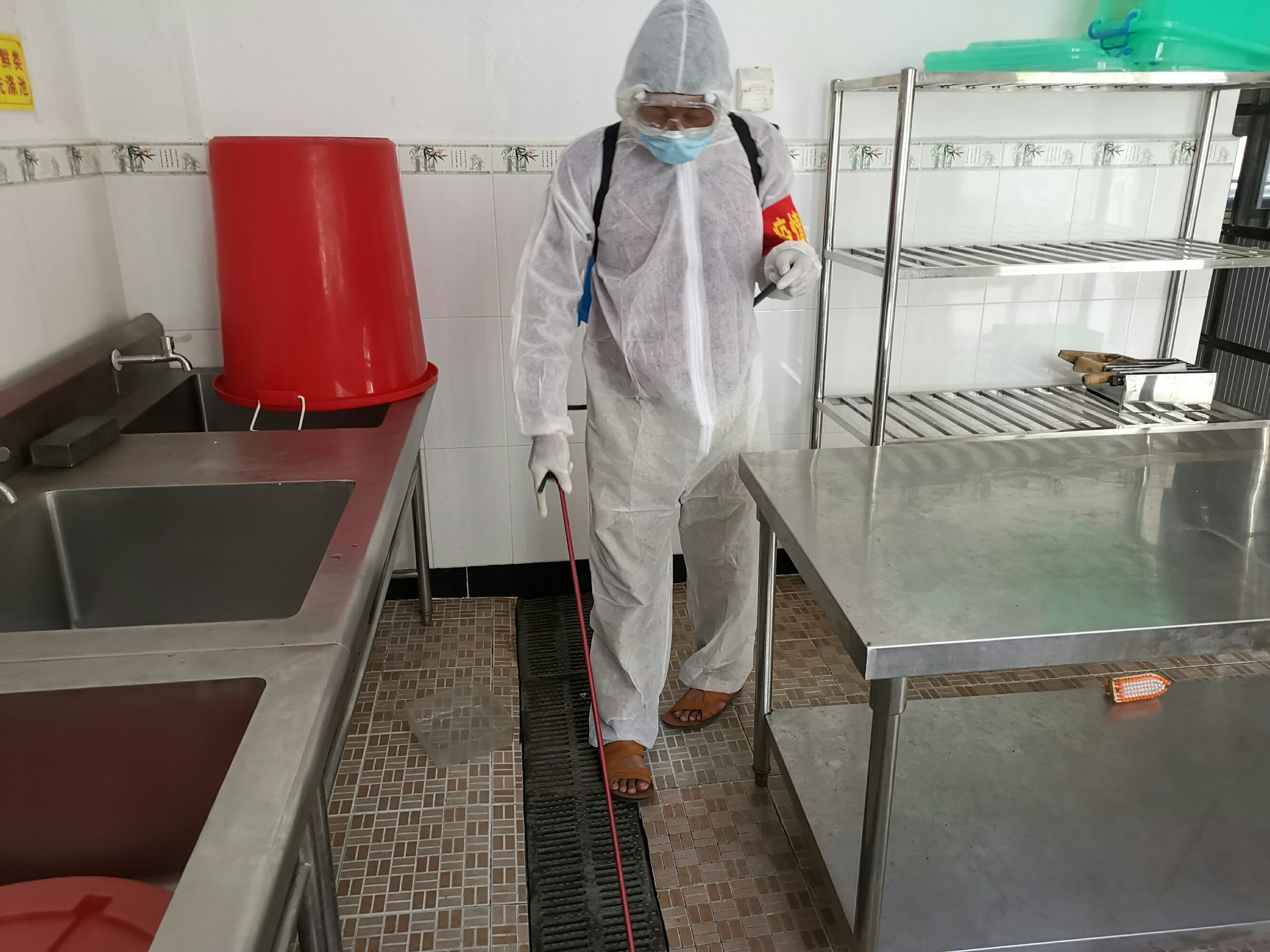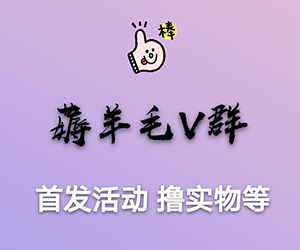15篇关于学校食堂食品安全管理体系的文章
在当前的社会生活中,机构的使用频率呈上升趋势。制度一般是指以规则或运作方式规范个人行为的社会结构。这些规则蕴含着社会的价值,其运作符合社会的秩序。我们应该如何制定一个制度?以下是小编整理的学校食堂食品安全管理制度,供大家参考,希望对有需要的朋友有所帮助。
学校食堂食品安全管理制度1
一、生产、销售有明显留样专用冰箱标志的冷肉、凉菜,留样冰箱有专人负责。
二、建立冷菜预约记录,包括日期、用餐时间、用餐时经营的冷菜名称、预约冷菜名称、预约样品数量、样品预约人等
三、冷盘有专人负责留样,使用灭菌器皿取样,每个冷盘取样不少于250g,放入灭菌容器中盖上或密封放入食品级袋中,然后存放在专用冰箱中冷藏。
四、冷菜样品应冷藏24小时以上进行检验。
学校食堂食品安全管理制度2
一、烹饪前必须仔细检查食物的质量。变质、有毒有害或感官性状异常的食材,不得入锅、煮、烤。
二、 熟食熟透,核心温度低于70°C。烹调后的食物不得食用超过 2 小时。外购的每顿饭、隔夜、熟食均经再加热后供应的,熟食应与食品原料或半成品分开存放,半成品应与食品原料分开存放。
三、调味料符合卫生要求,调味容器干净卫生,用完后盖上盖子。食物不接触有毒或不干净的物体。
四、碗、盘、盆、抹布等器皿和容器与生熟制品分开,熟熟制品应放置在消毒过的餐具和容器中。不要用抹布擦盘子,而是用消毒过的布或餐巾纸或纸擦掉盘子边上滴下的汤汁。
五、油炸食用油多次在高温(230°C)下使用,发现颜色变深或有异味的油应丢弃。
六、工作结束后,工具、用具、灶具、炉灶、地板、台面等要清洗干净,烹饪加工场所要保持清洁卫生。
学校食堂食品安全管理制度3
一、使用前对储藏室进行室内空气消毒,每次消毒0.5-1小时。
二、 员工进入储藏室换衣服并第二次洗手。食品储藏室不得存放杂物和个人物品。非食品室员工未经授权不得进入食品室。
三、用于餐饮的勺子、盘子、盆、碗、盘子等餐具在使用前要进行消毒,餐具也要清洗干净。
四、需要用完的剩饭菜应存放在专用冰箱内,不超过24小时。我们不处理客人、员工和学生的剩余食物。
五、配餐结束后,及时处理剩余食物,保持配餐间清洁卫生。
学校食堂食品安全管理制度4
学校食堂员工食品安全知识培训体系
1、食堂食品安全管理人员应定期参加食品安全知识和相关法律法规的学习,掌握与食品安全相关的法律法规和卫生知识,并能够进行对所在单位的食品从业人员进行安全检查。知识教育培训;
2、食品安全管理人员要定期组织员工食品安全知识培训,让大家掌握应知的食品安全知识,按要求操作,养成良好的个人卫生习惯。
3、每年组织从业人员食品安全知识培训一次,每年培训不少于40小时,并进行食品安全知识考试。食品安全知识考试不及格者必须接受再培训。
学校食堂食品样品系统
1、食堂为师生提供的每一餐饭菜都必须有专人品尝。
2、食堂必须按要求每餐和食物储备100克,放入食品袋中。
3、样品食品冷却后,必须用保鲜封条密封(或盖上),并在样品上标明样品保存期限、产品名称、进餐时间、样品架外部。必须立即将其储存在专用的样品冷冻箱中。
4、每餐都要做好留样记录:留样时间和食物名称,方便检查。
5、保留的食品样品必须保存 48 小时才能丢弃。
学校食堂食品添加剂使用管理制度
1、食品添加剂实行“五专”管理,即专卖店采购、专柜储存、专人负责、专称量工具、专采购使用台账;
2、食堂不得购买、储存亚硝酸盐,烹饪食物时不得使用亚硝酸盐;
3、从正规的食品添加剂店购买食品添加剂,并索取产品检验证书和说明书。产品标签上无证书编号,无厂名,无厂址,无使用范围,无使用量。无法购买描述内容等添加剂;
4、加工熟食必须使用添加剂时,使用前应阅读产品标签和说明书。不得使用标签不明确或来源不明的添加剂;食品添加剂必须按规定称重。保留使用记录。
学校食堂仓库管理系统
1、食堂仓库必须有专人负责。为确保食品安全,目前仓库已上锁,除管理员外,任何人不得擅自进入仓库;
2、仓库里设置了食品架,对原材料进行分类整理。食品原料应放在离地20cm、离墙20cm、离棚65cm;
3、严格执行仓库出入库制度,做好出入库记录;
4、严禁存放“三无”食品、腐烂变质食品、原料等;
5、保持仓库整洁有序,保证通风良好;
6、设置防蝇、防鼠等设施,安全有效;
7、仓库管理人员必须穿工作服、戴工作帽子,并持有效的健康证明和食品安全知识培训证上岗;
8、仓库管理工作未按上述规定操作,造成失误,将追究仓库管理员责任。
学校食堂烹饪加工管理系统
1、进入烹饪室的人员必须携带健康证和食品安全知识培训证;
2、进入烹饪室的人员必须穿工作服,戴工作帽;
3、所有使用的容器、器皿必须清洗消毒;
4、食品加工前应检查感官异常;
5、进入烹饪室的食物必须清洗干净,食物容器必须放在指定的桌子上,不能放在地上;
6、油炸食品食用油使用次数不得超过两次;
7、每个岗位工作时,地板和书桌必须时刻清洁;
8、垃圾应放入污桶,污桶应盖好;
9、不要打开没有防蝇纱的窗户;
10、个人物品不得带入烹饪室;
11、负责人定期检查各岗位人员的操作情况。
学校食堂原料采购凭证制度
1、食堂原材料的采购必须由具备食品安全和采购知识的专人进行;
2、在指定地点采购食品和食品原料。购买包装食品时,必须取得食品生产许可证、食品检验证明或化验证明等。购买肉禽类食品时,必须取得检疫证明。包装食品时,应检查食品的色、香、味、形等感官特性;
3、建立证书申请文件,申请的证书按时间顺序分类归档;
4、每次购买食物都要向店主索要收据,并保留收据,直到吃完食物正常为止;
5、食品原料采购负责人应穿着整洁的工作服和帽子,并佩戴有效的健康证明和食品安全知识培训证书。
学校食堂清洁消毒系统
1、餐具、器皿必须按照一刮、二洗、三冲、四消毒、五清洗的操作程序进行清洗;
2、确认餐具清洗完毕后,将待消毒的餐具放入餐具消毒设施中;
3、将消毒过的餐具放入餐具清洗柜中备用;
4、厨房要使用的器皿和客人用的器皿必须使用器皿清洁柜内的消毒过的器皿,否则不能使用;
5、厨房使用的食品容器和用具,必须在指定的容器洗涤槽内清洗,然后放入指定的消毒柜进行消毒(或用75%酒精擦拭消毒);
p>
6、不应使用未经消毒的容器和器具。
学校食堂餐厅卫生管理制度
1、建立健全餐厅卫生制度,坚持四定(定人、定对象、定时间、定质量)、分工负责、定期巡查;
2、餐厅配备防蝇、防鼠、防尘设施,杜绝“四害”;
3、餐厅地面保持清洁(无水、无油、无尘、无垃圾);
4、餐厅服务人员应时刻保持外表清洁,勤洗头、洗澡、剪指甲,餐厅内严禁吸烟;
5、餐厅工作人员上班前必须穿工作服、戴工作帽,用流动水洗手;
6、餐厅工作人员上厕所前必须脱掉工作服、帽子等,回来后用流动水洗手;
7、餐厅服务人员必须佩戴有效的健康证和食品安全知识培训证。
学校食堂餐饮卫生管理制度
1、餐饮室工作人员必须穿工作服,戴工作帽,持健康证和食品安全知识培训证上班;
2、每天准备饭前饭后都要开紫外线灯30分钟,对饭厅空气进行消毒;
3、储藏室里的所有食品容器、器皿、餐具和工作台面都必须清洗消毒;
4、杂物和非直接食品不得进入储藏室;
5、售卖食品的大法弟子手不得接触硬币、餐券等污垢,经营者必须勤洗手;
6、完成后关上门窗。
学校食堂餐厨垃圾处理管理制度
一、食堂管理人员要自觉遵守《食品安全法》及相关法律法规,认真履行食品安全直接责任人员职责,严格执行学校餐厨垃圾处置管理规定.
二、食堂必须按要求处理厨余。严禁将餐厨垃圾直接排入下水道、公厕等生活垃圾收集设施。

三、厨余垃圾分类管理,分开处理。食品原料粗加工产生的垃圾(菜叶、根、动物内脏、毛皮等垃圾)按生活垃圾处理,即放入带盖的垃圾桶,运至学校垃圾站,由环卫工人转运处理;泔水垃圾(食物残渣、大米、蔬菜、汤料、锅底、样品处理料等)按规定倒入专用泔水桶,由厨房油脂回收公司或农户回收。
四、泔水垃圾应按规定与回收商签订回收协议,注明泔水垃圾的回收用途,不得挪作他用。
五、专人负责餐厨垃圾的处置,建立完整的处置台账,详细记录餐厨垃圾的种类、数量、去向、用途,定期向总务处汇报,并接受监督检查。
六、学校食品安全管理领导小组加强对食堂餐厨垃圾处置情况的检查监督。对于食堂不按规定处理餐厨垃圾的,将责令其立即改正,并对相关人员给予一定的处罚。
学校食物中毒或其他食源性疾病应急预案系统
一、学校要对全体师生进行食品安全预防、自我保护和救援方法的宣传教育。
二、食堂一旦发现食物、饮水等问题,要求学生立即停止使用,并立即向学校食品安全工作领导小组和学校食品安全应急工作领导报告。小组协助学校寻求急救措施和补救措施。
三、学生一旦发现食物中毒,应立即向班主任或班主任及医务室或食堂报告。食品卫生安全应急工作领导小组。学校应当及时向上级主管部门和卫生防疫机构报告。
四、根据患者病情,立即将患者送往相关医院就诊,并协助卫生医疗机构对患者进行救治。
五、保留导致或可能导致食物中毒的食物及其成分、工具、设备和场所。
六、配合食品药品监管部门开展调查,并按要求提供相关材料和样品。
学校食堂食品安全管理制度5
一、新鲜蔬菜、肉、鱼和蛋必须在指定地点购买。
二、购买的食品必须符合国家有关卫生标准和规定。
三、禁止食用以下食物:
(1)有毒、有害、腐烂、腐臭、发霉、生虫、肮脏、混入异物或其他感官异常的食物。
(2)肉食无检验证明。
(3)超过保质期等不符合食品标签规定的定型包装食品。
(4)食品生产商和经营者提供的食品没有卫生许可证。
四、采购食品专用车,容器干净卫生,生熟分开,运输过程中采取防蝇、防尘、防晒、防雨措施;食物轻拿轻放,注意卫生,食物不直接接触地面,不要将直接进口的食物堆放在人行道或路边。
五、购买肉类时,一定要索取检验证明或化验证明;购买蔬菜时,一定要向菜农询问农药喷洒情况;建立所有食品采购的核算制度,注明所采购食品及其原料的名称、时间、地点、数量、人员,并记录所采购食品的生产者和地址、生产日期、保质期、贮存条件、食用方法等及其原材料。保留所有食物的样本和记录。
六、食品及其原材料的采购必须符合以下要求:
1、采购大批量定型包装食品及其原料,从供应商处取得同批次的食品卫生检验证明或化验单、购物发票及《卫生许可证》复印件。
2、小批量采购定型包装食品及其原料,向供应商索取购物发票或购物凭证。
3、在采购散装食品及其原料时,检查色、香、味、形等感官属性,并取得购物发票或购物凭证。
4、取得的食品卫生检验证明或检测单、购物发票、凭证与所购食品的名称、商标、批号或生产日期一致。
5、不要购买不能提供检验证明或检测单、购物发票、购物凭证等证明材料的食品及其原料。
学校食堂食品安全管理制度6
一、学校要建立健全以学校(幼儿园)负责人为第一责任人的食品安全责任制。校长是学校食品安全的第一责任人。校长必须对学校的食品安全负总责,学校应有专职和兼职的食品卫生监督员1-2名,专门负责食品卫生监督工作。建立食物中毒或其他食源性疾病等突发事件应急机制。建立学校食品卫生责任追究制度。
二、学校食堂、副食品店要建立健全食品管理规章制度。学校食堂、副食品店必须取得餐饮服务监督部门颁发的餐饮服务许可证(包括原食品卫生许可证),未取得许可证的不得加工、供应食品。食品的加工和供应必须符合食品卫生许可证批准的范围。应按规定建立学校食堂卫生档案。档案应包括个人健康证明、食品原料及相关用品证明信息、食品添加剂和调味品采购使用记录、餐具消毒自检记录、食品样品记录、食品原料采购合同记录等。
三、学校食品工作人员必须有良好的卫生习惯并获得工作证明。食品从业人员必须按照有关规定取得体检合格证和健康培训合格证后才能操作。每年进行一次健康体检,定期接受职业道德教育和健康知识、食品安全法规培训。从业人员操作时应穿着干净的工作服和工作帽(特殊室操作人员也需要戴口罩)。
四、学校食堂和副食品店要严格控制食品采购。禁止购买不符合食品安全标准和要求的食品。查验取得并留存供应商加盖公章的许可证、营业执照和产品资格证书复印件;建立进货进货台账,每天记录,对所有食品进行详细记录。有条件的学校可以建立蔬菜农药检测等食品相关检测,严格控制食品原料进入。
五、学校食堂和副食品店要建立健全食品检验和储存制度。食品入库前必须严格验收,并设立专人进行验收登记和台账。食品储存完毕后,必须检查其感官特性和保质期。例行检查应重点检查食品是否变质(包括霉变、腐败变质)、包装是否破损、是否超过保质期等。食品贮藏库房要专设,食品贮藏要分类、分区、分区、离地存放。食品存放场所禁止存放有毒有害物品和个人物品,禁止与药品、农药、洗涤剂、防腐剂、杂物等混放。
学校食堂食品安全管理制度7
为提高食堂员工的食品安全意识,增强责任心,保障全体师生的食品安全,按照《餐饮服务食品安全操作规范》、《潍坊《校园安全建设标准》等文件,结合我校实际情况,针对我校食堂食品安全工作特提出以下要求。
一、购买自取
1.实施定点购票制度和领证取票制度。食堂供餐单位必须具备合法资质,证件齐全。食堂必须实行定点采购制度,严格取得供应商的有效许可证、进货商品的检验检疫证明或相关检验报告。需核对供应商证明是否有效、完整,所提供的项目是否在营业执照范围内,所留复印件是否加盖单位红章。
2. 试验货物系统。在食堂进货时,必须有两人在场验货,看秤,看看有没有霉变变质,尤其是冷冻食品。发现不合格食品,必须坚决退回,严禁地沟油、不合格猪肉、不合格蔬菜进校。食堂。
3.实行两人双锁系统。食堂面库、蔬菜库等库房必须有两把锁。锁钥匙由不同人员保管,一把钥匙由保管人保管,另一把钥匙由员工管理室保管。如需提取相关物品,须提前申请,由保管人及管理室工作人员为储物柜解锁。项目完成后立即锁定。
二、卫生要求
(一)为保持良好的个人卫生,操作过程中应穿着干净的工作服和帽子,不得外露头发,不得留长指甲、指甲油或饰品。
(二)术前洗手,术中保持手部清洁,手被污染及时洗手。
(三)接触直接进口食品的经营者有下列情况之一,应洗手消毒:
1.处理食物前;2.使用卫生间后;3.接触生食后;4.接触受污染的工具和设备后;5.后咳嗽、打喷嚏或擤鼻涕; 6.处理动物或废物; 7.触摸耳朵、鼻子、头发、脸、嘴或身体的其他部位; 8.从事任何可能会污染手部的活动。
(四)请勿将个人物品带入食品处理区,请勿穿着工作服或工作鞋上厕所。
(五)请勿在食品处理区吸烟、吐痰、漱口、进食或饮水或从事其他可能污染食品的活动。
(六)工作完成后,及时清理,立即清理垃圾,清理地板,清洁消毒工具,放入指定位置。
(七)一天工作结束后,各工作区要注意关灯、关门、收好防鼠板、防鼠网。
三、意大利面请求
1.包子的制作要严格遵守学校的相关要求,包子要定期称重。
2.,面粉和馒头盘不能直接接触地面。
3.包子蒸好后,剩余的面粉要立即存入面粉库,包子机和和面机要擦干净。
4.卫生工具、手套、工作服等应放在指定位置,不得乱扔。
四、食物要求
(一)存储关闭:
1.存放的食品应分门别类,做到生熟分开,避免交叉感染;
2.食品储藏间距离墙壁和地面10cm以上,摆放整齐;
3.库存物品要经常检查,及时检查保质期。所有物品应在有效期内用完。如果发现任何变质或发霉的食品和原料,应立即清除。
(二)处理中:
1.蔬菜应清洗干净,去除腐烂的杂质和土壤。将每种蔬菜至少清洗或冲洗 3 次。一般蔬菜(如白菜、菠菜等)应在盆中用淡盐水浸泡1小时以上,再用清水冲洗一遍,尽可能去除药物残留。有农药残留的蔬菜,如青椒、花椰菜、芹菜等,必须用开水烫过后再放入锅中,以去除农药残留。
2.切好的蔬菜要大小均匀,适合学生食用。
3.冻肉、冻鱼、冻鸡要先浸泡充分解冻,再检查变质,煮熟后油炸。
4.操作过程中如果食物掉在地上,应清洗干净后放入容器中。不能食用的食物要及时清除,不得留存。
5.切好的蔬菜或原料应该放在盆里,放在架子上,不要直接放在地上。
6.学生食品桶必须单独拿取,不得堆放,以防交叉污染。
7.食品入库时,应将生熟容器分开,存放在专用架子上,并采取必要的防蝇、防尘措施。
学校食堂食品安全管理制度8
一、食堂所有直接为单位师生服务的管理人员、厨师、采购员、店员、保洁员等,均应遵守本管理制度。
二、新入职或临时入职人员应进行健康检查并取得健康证明方可上岗。餐饮从业人员每年至少进行一次健康检查,必要时接受临时检查。
三、任何患有痢疾、伤寒、病毒性肝炎等胃肠道传染病、活动性肺结核、化脓性或渗出性皮肤病等妨碍食品安全的疾病的人员,不得直接从事食品安全工作。进口食品。
四、用人单位出现发热、腹泻、皮肤伤口感染、咽部炎症等影响食品安全的疾病,应立即离职,待查明原因并治愈阻碍食品安全的疾病后,方可重新开业。职责。
五、食品安全管理人员应及时对本单位餐饮从业人员进行登记,建立从业人员健康档案。
六、食品安全管理人员应及时了解员工的健康状况,定期检查员工的健康证明。
七、从业人员的健康证明应随身携带或交主管部门检查。
实习培训管理系统
一、食堂员工,包括新员工和临时员工,必须经过培训并获得资格才能在学校食堂工作。
二、食品安全管理人员应制定从业人员食品安全教育培训计划,组织从业人员参加各类岗前、在职培训
三、食品加工操作岗位应分别进行食品安全教育培训。 The content should include food safety laws, regulations, norms, standards, food safety regulations, and processing operation procedures for each position.
四、The training method is a combination of centralized lectures and self-study. Those who fail to pass the regular assessment will be hired after passing the examination.
五、The establishment of food safety for canteen service practitioners is just a training file to record the training time, training content, and assessment results for inspection.
School canteen food safety management system 9
一、Environmental and mechanical hygiene
1、The canteen is responsible for the internal and external environmental sanitation, and the responsibility must be assigned to people, so that the doors and windows and glass are clear, the floor is clean after work, the table is cleaned three times a day, the floor is brushed three times a day, and a general cleaning is done once a week.
2、There should be rodent and fly prevention measures inside and outside the canteen, and cockroaches should be eliminated regularly and systematically.
3、All kinds of cooking machinery should be in charge of and maintained by a special person. After use, they should be cleaned for a long time and covered with a special cover.
4、Separate raw and cooked items in the refrigerator, store items in an orderly manner, and defrost regularly.
二、Food and cookware hygiene
1、Strictly implement the Food Sanitation Law, and store raw, cooked and semi-finished products separately.
2、Do not buy, cook, or eat rotten and expired food, and do not leave any leftovers. From purchasers, custodians to every cook, strict checks are required to prevent food poisoning.
3、All kinds of cooking utensils should be placed in a fixed position and placed neatly and orderly.

三、Personal hygiene
1、You must wear neat work clothes and work caps when you go to work. You are not allowed to wear work clothes to the toilet or go out. You should take a bath, wash your hands, and change your work clothes frequently. A good habit to wash your hands.
2、No smoking, no rings, earrings, necklaces, watches, no lipstick, no nails, no bare feet, no long hair or long nails.
3、In case of diarrhea, cold and fever, skin disease, trauma, etc., individuals should report to the health care doctor and take effective measures in time.
四、Disinfection and hygiene of tableware
1、Tableware and cooking utensils are strictly disinfected every day.
2、Drugs used in restaurants and meal preparation rooms are disinfected, and the drugs and water are mixed and sprayed as required.
3、Apply alcohol (75% alcohol) to hands, knives, chopping boards, etc. before cooking.
4、The counter floor should be scrubbed with disinfectant every day in the pantry.
5、After disinfection, it should be light, clean, clean, dry, without the smell of disinfected water and wine, and meet the various hygiene indicators of the inspection and testing of the epidemic prevention station.
五、Kitchen Site Hygiene
1、The floor is kept clean and dry, and sewage must be removed quickly.
2、Food should be prepared on a work surface, and raw and cooked food should be handled separately.
3、Knives and cutting board tools and rags, etc., must be kept clean.
4、Food should be kept fresh, clean and hygienic. After washing, it should be sorted into plastic bags, or packed in covered containers, and stored in the refrigerator or freezer respectively. Dew at room temperature for too long. The fish and meat should be taken and processed quickly to avoid repeated thawing and affect the freshness.
5、All perishable food and drink items should be stored in refrigerated containers below zero degrees Celsius. Cooked and raw food should be stored separately to prevent food odors from spreading in the refrigerator and absorbing the odor in the box, and Prepare deodorant or burnt charcoal and put it in the refrigerator to absorb the odor.
6、Working kitchen counters, under and under the kitchen box, and the dead corners of the kitchen, special attention should be paid to cleaning to prevent minced meat and vegetable scraps from rotting.
7、A range hood should be installed and the grease should be cleaned regularly.
8、If there are holes and gaps in the floors, ceilings, walls, doors and windows, they should be filled and sealed, and kept clean to prevent cockroaches and mice from hiding or coming in and out.
9、Condiments should be packed in appropriate containers, covered immediately after use, and all utensils and dishes should not be in contact with the ground.
10、Tight-covered dirt buckets and kitchen waste buckets are emptied overnight, not in the kitchen overnight. If it needs to be cleaned overnight, it should be isolated with a bucket lid, and the kitchen waste bucket should be kept clean all the time.
11、Wear neat work clothes and hats when working. When working, do not touch or contaminate food and utensils with your hands, and try to use clips, spoons and other tools to take them.
12、When working in the kitchen, do not smoke, cough, spit, or sneeze near food or utensils. In case of sneezing, turn your back to the food and cover your mouth and nose with a handkerchief or toilet paper. and wash your hands immediately.
13、Kitchen staff should wash their hands and keep their hands clean before and after using the toilet.
14、Kitchen cleaning should be done several times a day. After cleaning, the cleaning utensils should be placed centrally. Bactericides and detergents should not be put together with pesticides, etc., and toxic substances should be marked and placed in a fixed place and managed by a designated person.
15、Do not lie down or sleep in the kitchen, and do not hang clothes, place shoes, or leave clutter.
School canteen food safety management system 10
一、Clarify the hygiene responsibilities of the cafeteria staff, and do a good job in cleaning the interior and exterior of the cafeteria every day.
二、A special person is responsible for cleaning the restaurant and the environment, keeping the kitchen and restaurant clean and hygienic, the drains are unblocked, and the hand-washing equipment is in normal operation.
三、Take effective measures to eliminate rodents, cockroaches, flies and other harmful insects and their breeding conditions. Kitchens, restaurants, warehouses, cold dishes and other special rooms are free from flies, rodents and other fields of vision.
四、The floor, walls, doors and windows, lamps, tables and chairs of the restaurant are clean and tidy, and there are no harmful insects and mice indoors.
五、Processing facilities, equipment and tools are cleaned, kitchen floors are free of food residue, smoke and exhaust facilities are free of grease deposits, walls and ceiling cleaners, and mildew spots are not present.
六、After the tableware for each meal is cleaned, all the canteen staff should clean and rinse the working area of the canteen (including the floor, countertops, tables and chairs of the restaurant) without leaving any residue, so as to keep it clean and hygienic , to prevent the breeding of mosquitoes, etc.
七、 Garbage bins are covered, waste containers are airtight, clean in appearance, and clearly marked, and garbage and waste are removed in time.
八、Dispose of waste oil and swill oil in a timely manner in accordance with relevant regulations.
九、Every long holiday, all canteen staff go to work 1 day in advance, clean the inside and outside of the canteen, and disinfect all canteen tableware and utensils as required.
School canteen food safety management system 11
一、There are dedicated washing equipment for tableware (pool), sufficient and effective tableware disinfection equipment (sterilization cabinet, disinfection pool), and sufficient and complete tableware cleaning facilities (cupboard, cupboard) ).
二、Tableware and utensils strictly implement the one-wash, two-rinse, three-disinfection, and four-cleaning system. Thermal disinfection is carried out according to the procedure of slag removal→washing→cleaning→disinfection; chemical disinfection is carried out according to the procedure of slag removal→washing→disinfection→cleaning, and there are triple pools (one wash, two elimination, and three flushes).
三、Boil and steam disinfection at 100°C for 10 minutes, electric roasting at 120°C for 20 minutes, and infrared disinfection at 120°C for 15~20 minutes.
四、Disinfected and unsterilized tableware and utensils are stored separately and clearly marked. Disinfected tableware and utensils should be placed in special cleaning cabinets or cleaning cabinets. Do a good job of flies and dust.
五、The tableware and utensils are cleaned and disinfected by special personnel, and records are kept. The use of detergents and disinfectants meets the hygienic standards and requirements of food detergents and disinfectants, and special personnel are responsible for keeping them.
六、The tableware and utensils have been cleaned and disinfected, the waste is cleaned up in time, and the cleaning and sanitation of the laundering room is done well.
School canteen food safety management system 12
一、 Designate trained and qualified full-time and part-time personnel to be responsible for the purchase of food, food additives and food-related tea products, inquiries, purchase inspections and purchase records. Full-time and part-time personnel should master the legal principles of food safety in catering services, the basic principles of food safety in catering services, and the common sense of food sensory identification.
二、 Purchasing food, food additives and food-related products should be purchased from food production and operation units or wholesale markets with complete licenses, and purchase vouchers with the seal or signature of the supplier should be obtained and retained. The shopping voucher should include the supplier's name, product name, product quantity, delivery or purchase date, etc. Long-term fixed-point procurement signs procurement and supply contracts with suppliers that include food safety content.
三、When purchasing directly from the production and processing unit or production base, you should check, request and keep copies of the license, business license and product qualification certificate stamped with the official seal of the supplier. The official seal or signature of each shopping voucher or each delivery note.
四、When purchasing a small amount or temporarily from shopping malls, supermarkets, wholesale and retail markets, etc. of circulation business units, you should check and keep copies of business licenses and food circulation licenses with official seals. Each purchase voucher or delivery note with official seal or signature.
五、When purchasing small quantities or temporarily from shopping malls, supermarkets, wholesale and retail markets, etc. of circulation business units, it is necessary to confirm whether they have business licenses and food circulation permits to keep each purchase stamped with the official seal or signature of the supplier Voucher or per delivery note.
六、For purchases from farmers' markets, a shopping voucher with official seal or signature issued by the market management department or business operator shall be obtained and retained. Purchased from individual industrial and commercial households shall be inspected and retained with the seal or signature of the supplier. Permits, business licenses or copies, shopping vouchers and a list of each supply.
七、 Those who purchase livestock and poultry meat from shopping malls, supermarkets, wholesale and retail markets, etc., and farmers’ markets of food distribution units should check the original animal product quarantine certificate. The license stamped or signed by the party, a copy of the business license and the original animal product quarantine certificate.
八、The purchaser of dairy products shall inspect, request and keep copies of the license, business license and product qualification certificate stamped or signed by the supplier.
九、Before purchasing food, food additives and food-related products, catering service providers shall check whether the outer packaging and packaging labels of the purchased products comply with the regulations and whether they are consistent with the shopping vouchers, and establish purchasing records. Purchasing records shall truthfully record the name, specification, quantity, production batch number, shelf life, name and contact information of the supplier, and date of purchase of the product.
十、按产品类别或供应商、进货时间顺序整理、妥善保管索取的相关证照、产品合格证明文件和进货记录不得涂改、伪造其保存期限不得少于2年。
学校食堂食品安全管理制度13
一、食堂从业人员每年进行一次健康检查,持有有效的健康证和卫生知识培训合格证上岗。
二、建立员工健康检查花名册及档案资料,员工《健康证》实行统一保管,并随时接受卫生监督执法部门对从业人员的健康抽查。
三、严格控制凡患有痢疾、伤寒、病毒性肝炎等消化道疾病(包括病原携带者),活动性肺结核,化脓性或者渗出性皮肤病以及其他有碍食品卫生的疾病的,不得从事接触直接入口食品的工作。
四、发现员工咳嗽、腹泻、发热、呕吐、手部皮肤破损、烫伤、皮肤湿疹或化脓、疥疮、咽喉疼痛等有碍食品卫生的病症时,应立即调离工作岗位,待查明病因,排除有碍食品卫生的病症或者治愈后方可重新上岗。
五、检查从业人员的穿戴是否规范:工作衣、帽,并把头发置于帽内。
六、检查从业人员个人卫生:指甲(不留长、不涂指甲油、不戴戒指),戴口罩,工作前清洗、消毒手。
学校食堂食品安全管理制度14
1、员工上岗前进行食品卫生法律法规和食品卫生知识培训,经考试或考核合格后方可上岗。
2、每年组织员工员工两次以上卫生知识培训,进行《食品卫生法》、食品卫生知识和职业道德教育,不断提高员工素质。
3、建立员工培训档案资料,包括培训时间、地点、内容、对象、授课人员和考试或考核资料等。
4、每年制定员工学习和培训计划,包括经常性教育和有计划组织培训,单位法人、食堂承包人每年学习时间不少于20学时,食堂专职管理员不少于50学时,员工不少于15学时。
5、员工熟悉岗位卫生制度,经常抽查员工的卫生知识知晓情况,并作为考核、续聘员工的条件之一。
学校食堂食品安全管理制度15
1、在食堂管理员领导下进行工作。协助食堂管理员负责学校仓储食物保管,做到离开库房及时关门上锁。
2、对采购回来的食品严格把关、做好食品的入库验收、登记工作。每日对入库食品进行登记造册,做到勤进快销,并建好三级管理台账(采购、供货商、领料人签名)。台帐中应有食品采购日期、数量、单价、生产厂家、保质期、出厂日期、供货人、以及供应商的卫生许可证、身份证号、采购合同及检疫证等。
3、规范食品添加剂管理,认真执行卫生部门精神,建好台账,严格把关,做好“五专”管理要求。
4、认真学习食品保管与食品卫生知识,能够辨识腐败变质、失效、过期等伪劣食品,懂得学生营养配餐知识。
5、入库食品做到分类、分架、隔墙、离地、标示存放;上报计划要少报勤报,做到食品先进、先出;定期检查、及时处理变质或过期食品。
6、食品贮存场所禁止存放有毒、有害物品及个人生活物品。用于保存食品的冷藏设备,必须贴有标志,生食品、半成品和熟食品应分柜存放。
7、讲究个人卫生,不用手接触直接入口食品,熟食入库及时加盖。
8、搞好室内外清洁卫生,做到湿式清扫,每日保洁,保持室内食品堆放整齐。
9、严格监督工作人员及非工作人员在库房及各操作间、餐厅内抽烟。 (禁止非工作人员进入库房)。
10、加强食堂防盗防毒管理,出入库房及下班时要及时上锁,不能将钥匙随便交他人保管,保障师生安全、健康。
【学校食堂食品安全管理制度】相关文章:
学校食堂食品安全管理制度06-20
学校食堂管理制度06-05
学校食堂的管理制度06-17
学校食堂食品安全承诺书11-21
学校食堂消防管理制度11-06
学校食堂安全管理制度06-28
学校食堂卫生管理制度05-06
学校食堂管理制度范本08-20
学校食堂管理制度(精选10篇)02-22
学校食堂管理制度(精选11篇)10-01



